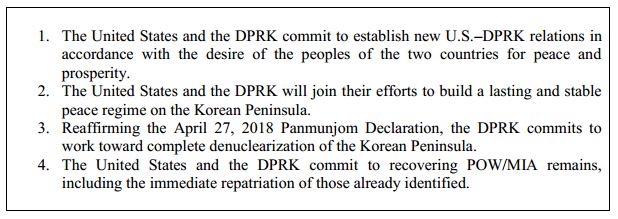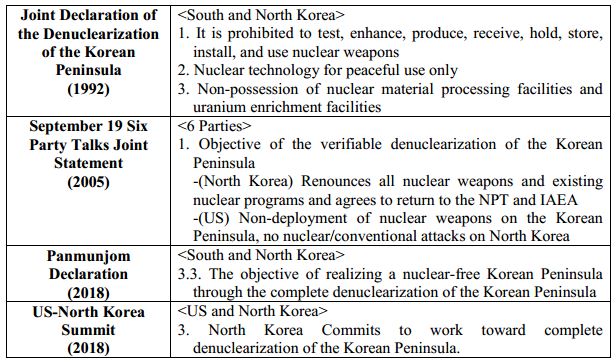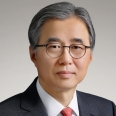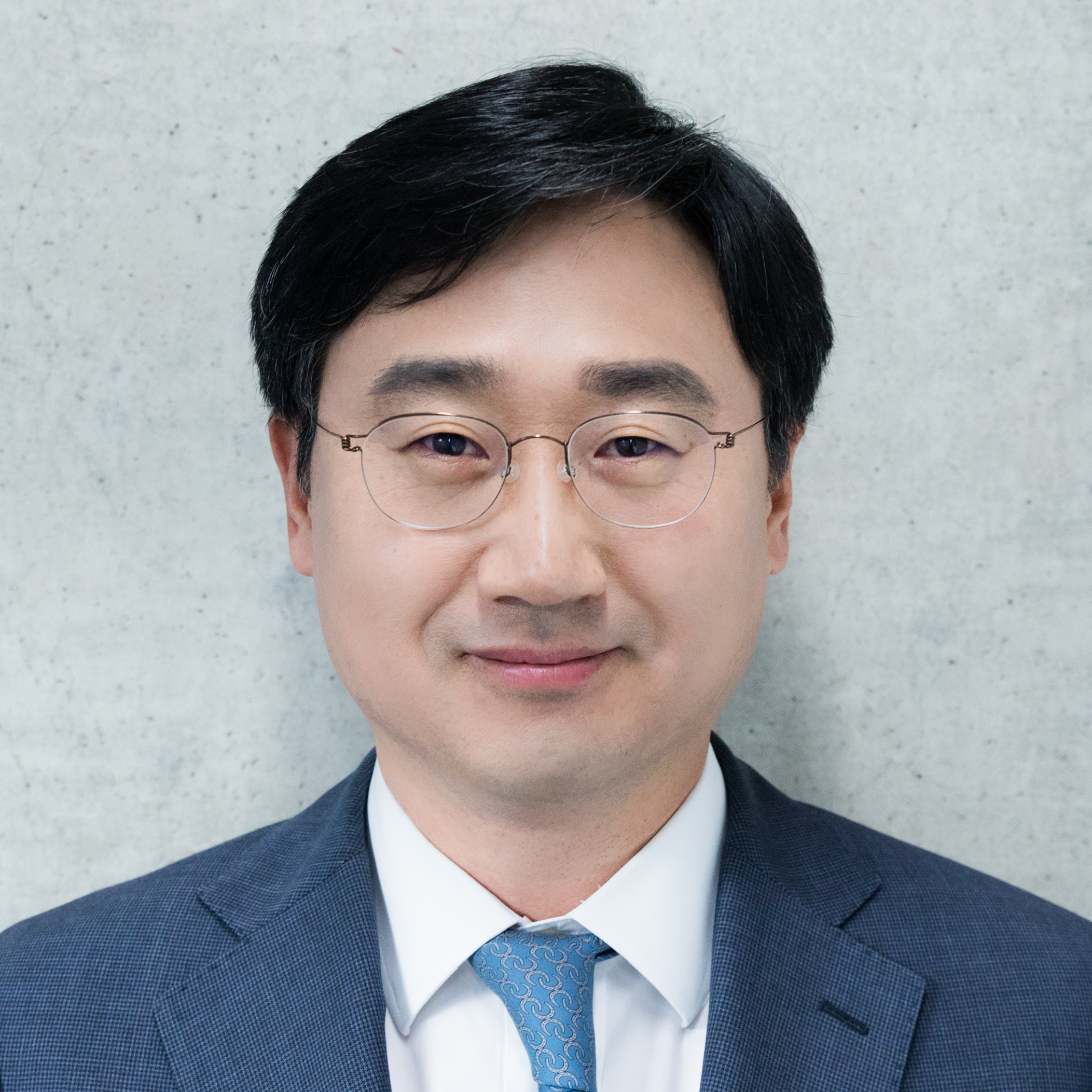The US-North Korea summit in Singapore was heralded as a historic meeting but ended without success. While the meeting itself was meaningful, the disappointment was as big as the expectations were high. There was no comprehensive, verifiable, and irreversible nuclear dismantlement (CVID) as was originally expected, although the two sides agreed on comprehensive denuclearization in principle. The so-called “front loading” approach that Secretary of State Pompeo emphasized and was referred to by National Security Advisor John Bolton was nowhere to be seen. An even more worrisome situation emerged from President Trump’s press conference after the summit when the president said he would unilaterally suspend the ROK-US military exercises. By doing so, the US has depleted its precious denuclearization negotiating assets without close consultation with the South Korean government. The summit was held in order to achieve denuclearization, but the ambiguity around denuclearization remains, possibly resulting in a weakened alliance. It is more important than ever for the South Korean government to express its position.
1. Evaluation of the US-North Korea Joint Statement
US President Trump discussed the issue of denuclearization of the Korean peninsula and the peace regime through a private conversation, a group meeting, and a business luncheon with the North Korean leader Kim Jong Un. After the talks, the two leaders signed a joint agreement. The agreement is composed of four points, the contents of which are shown in Table 1.
Table 1: US-North Korea Joint Statement Four Points
The joint The joint statement focused on improving relations, a peace regime, denuclearization, and repatriation of remains. In general, diplomatic agreements describe general principles, bilateral obligations, and respective duties, which are easy to describe in this case. However, it is regrettable that the statement begins with the US-North Korea relations issue and that the most important issue, North Korea’s denuclearization, is only addressed after the improvement of relations and the peace regime. The nuclear issue should be described first, as it is possible to interpret this as the nuclear issue having arisen due to the US’ hostile policies. Thus, criticism is inevitable that the contents of the agreement lack specificity and retreat from previous agreements.
Looking at the concrete proposals of the joint agreement, the US and North Korea have pledged to make efforts to improve bilateral relations. However, the join statement does not contain any specific details as to the process of how relations will improve and at which point a liaison office or an embassy will be established. As a result, if the road map for denuclearization does not come out at the next meeting, it can be regarded as an agreement in principle only.
Next, the joint statement refers to the peace regime on the Korean Peninsula by emphasizing its character as “stable” and “lasting.” The term “lasting” is synonymous with the permanent peace regime included in the September 19, 2005 Joint Statement and the April 27 Panmunjom Declaration, although “stable” was not included in the September 19 Joint Statement. Presumably, it was used with the same intention as “solid” found in the Panmunjom Declaration, which implies that the process of building a peace regime should proceed smoothly and without any unexpected circumstances.
The section on denuclearization is described very plainly. The complete denuclearization of the Korean peninsula, which was agreed to at the Panmunjom Declaration, was reaffirmed. The only difference is that the Panmunjom Declaration states that both North and South Korea will take measures to achieve denuclearization, but the US-North Korea Joint Statement emphasizes North Korea’s obligation to denuclearization. Overall, however, this was a retreat compared to the September 19 Joint Statement. At the time, the North agreed to abandon its nuclear weapons and nuclear program in accordance with verifiable denuclearization goals. As a result, the US-North Korea summit talks have raised many problems in South Korea and the United States. Indeed, in the contents of the inter-Korean or US-North Korean denuclearization agreements described in Table 2, it can be seen that the level of promised denuclearization has declined, even as the North Korean nuclear capability has improved.
Table 2: Contents of Important Inter-Korean and US-North Korean Denuclearization Agreements
However, the fact that North Korea is the subject of efforts for complete denuclearization is more positive than the Panmunjom Declaration. The Panmunjom Declaration regrettably stated that South Korea and North Korea would jointly combine their efforts to achieve the goal of denuclearization, whereas in the US-North Korea summit statement, denuclearization is North Korea’s duty alone.
Some argue that the US and North Korea should be able to work out the separate parts of the joint statement during later negotiations. Of course this is true. However, while this may be possible as long as Trump stays in office and economic sanctions are stringently enforced, it is a concern that there will be more concessions given as Trump’s term shortens or sanctions are relaxed. We cannot keep promising better negotiations in the future.
Considering the above, the US-North Korea summit joint statement remains lacking in specificity, and in particular, the denuclearization statement degenerates from previous agreements. The background of these negotiations is curious, and there are two possibilities that could have brought it about.
First, perhaps the Trump administration decided that it would be better to make a comprehensive agreement with North Korea rather than an unsuitable one and to pursue the United States’ position in follow-up negotiations. If the North had requested excessive compensation for verification or denuclearization timetables, the US may have chosen to compromise rather than accept North Korea’s requirements. In this case, how quickly the denuclearization negotiations will progress in the next 2-3 months will be a measure by which to assess the summit.
Second, it can be assumed that the US was insufficiently prepared and that they faced a situation in which North Korea’s uncooperative behavior made compromising difficult. If no consensus could be reached at the time, the next step would be to worry about public opinion in the United States and pursue the second-best option of mirroring the contents of the October 2000 US-North Korea Joint Communiqué in their agreement. Whether it was because they didn’t have enough time, as Trump stated in the post-summit press briefing, or because the Communiqué was used as the starting point from the beginning, there are huge similarities between the two agreements, as is clear from Table 3.
Table 3: Comparison of the US-North Korea Summit Joint Statement and 2000 Joint Communiqué

2. Assessment of President Trump’s Press Briefing
As much as the summit agreement, President Trump’s press conference was cause for much concern regarding the security of the Korean peninsula. Trump’s position on the alliance was particularly worrying.
First, Trump gave a statement to the effect that he would unilaterally suspend US-ROK military exercises. Looking at it in context, Trump was first asked, “Can you be specific of the assurances you are willing to give to Kim Jong Un? Does that include reducing military operations?”
To which President Trump responded, “No, we’re not reducing anything.” When pushed for a more concrete answer, he replied, “At some point, I have to be honest — and I used to say this during my campaign, as you know, probably, better than most — I want to get our soldiers out. I want to bring our soldiers back home. We have, right now, 32,000 soldiers in South Korea, and I’d like to be able to bring them back home. But that’s not part of the equation right now. At some point, I hope it will be, but not right now.” With these words he effectively left the door open to the withdrawal of US troops from South Korea.
He continued: “We will be stopping the war games, which will save us a tremendous amount of money, unless and until we see the future negotiation is not going along like it should. But we’ll be saving a tremendous amount of money. Plus, I think it’s very provocative.” As the conversation continued, he included some prerequisites, but he did not back down on his announcement to unilaterally suspend the important joint military exercises.
President Trump made a mistake by accepting North Korea’s logic against the military exercises by referring to them as provocative. Even though the military exercises in the past were a defensive type of training in response to North Korea’s provocations, Trump simply repeated the phrases that he had just heard from Kim Jong Un.
There is another problem. The discontinuation of military exercises was not coordinated with the South Korean government in advance. While the Blue House was trying to determine Trump’s real intention, they stated that they “requested confirmation of the meaning of the U.S. position, but no answer had come.” It is clear that the US and ROK did not discuss these issues before these critical negotiations took place.
President Trump also lavished praise on Kim Jong Un for being “very talented” and said that “very few people” could run a country at the age of twenty-six. While this may simply be diplomatic rhetoric, it also reveals a serious misjudgment of the reality in North Korea.
Traditionally, American leaders have appeared cool towards North Korea due to inter-Korean tensions and the North Korean human rights issue. But President Trump expressed an excessively positive evaluation of Kim Jong Un while simultaneously suspending the military exercises that have been at the heart of the ROK-US alliance. At the same time, by claiming that the North Korean threat will soon disappear, he is taking an overly optimistic view of South Korea’s security situation. He has claimed this, despite North Korea having taken no steps to denuclearize.
3. South Korea’s Security Concerns and Direction for Change
The summit meeting was held in order to achieve the denuclearization of the Korean peninsula, but a concrete denuclearization agreement could not be reached, and instead the ROK-US alliance was weakened. In the past, South Korea’s security and economy were able to withstand North Korea’s strategic provocations because of the strong alliance with the US, but in the process of denuclearization, the ROK-US alliance is first to be challenged. So now we must pursue both goals of denuclearization and simultaneous development of the ROK-US alliance.
Reinforcing Cooperation on Denuclearization
We must successfully achieve denuclearization first. Over time, US negotiating power will weaken. President Trump’s time in office will come to an end and sanctions will be gradually relaxed. Therefore, the South Korean government should make every effort to preserve the momentum to denuclearize. The CVID principle must be strengthened if it is to be achieved, and as already stated by the authors,1 the following policy must be pursued.
First, it is necessary to clarify the concept of denuclearization, which has so far remained ambiguous. The meaning of denuclearization that the Korean government supports should be explained, including what measures need to be taken, and negotiations should be developed in that direction. In particular, we must accurately determine our requirements and communicate them to the US in preparation for negotiations with Secretary of State Pompeo and the DPRK representatives in the future.
Second, South Korea must support the US “front loading” approach. There is no need to hesitate to positively express our views on the most obvious denuclearization measures. Rather, it should be asserted that the denuclearization process should not be prolonged.
Third, sanctions relief should not be done too soon, and it should be in line with the level and speed of denuclearization. South Korea should not be perceived as a weak link in the sanctions regime, and it should show its dedication to achieve denuclearization. If we pursue improved inter-Korean relations too quickly, our leverage in the denuclearization negotiations will weaken. Therefore, until the moment when North Korea’s initial implementation measures become visible and the sanctions are lifted, we should keep security as central to our approach. Security first, economic cooperation second, should be the abiding principle if we are to create a virtuous cycle of denuclearization and improved inter-Korean relations.
Fourth, it is necessary to provide sufficient economic compensation in accordance with North Korea’s denuclearization level. We must provide incentives to bring about the denuclearization of North Korea. However, early on, vast cash subsidies to support North Korea are not the way to go, and instead we should approach a more natural change through various inter-Korean cooperation projects. Compensation costs should also make sure that the principle of equality is applied through an equal ratio between Korea and neighboring countries.
Fifth, we should not pursue a declaration to end the war too hastily. The fact that the declaration to end the war was not included in the US-North Korea summit means that it may take time to achieve. Rushing through this process could be a source of conflict between Korea and the US. While acknowledging that there is strategic usefulness in a ROK-US-DPRK treaty, we should also use it as an opportunity work towards a better situation on the Korean peninsula.
Sustainable development of the ROK-US alliance
The ROK-US alliance should be continuously strengthened. Of course, the alliance is not an end in itself. But it is a key aspect of our security strategy. From the perspective of South Korea, which must consider the potential threats of neighboring countries beyond North Korea, the ROK-US alliance is still a useful deterrent, even if North Korea’s threat decreases. Therefore, we need to think about strengthening our alliance in a more macroscopic and long-term perspective.
First, the reasons for the continuity of the ROK-US alliance should be identified and its direction determined by redefining its meaning and purpose. From a long-term viewpoint, we must create a vision for the future. We must consider the issue of how much the alliance can be allowed to weaken if the North Korean regime is guaranteed through its denuclearization. In this situation, we must envision a comprehensive future that includes potential threats and areas for strategic cooperation between Korea and the US beyond the Korean peninsula. This vision will not only lay out the future direction of the ROK-US alliance, but will also help overcome various challenges to the alliance during the process of negotiations for denuclearization.
Second, alternative measures should be taken to overcome the disruption of joint military exercises. In order to do this, it is necessary to examine in detail how to train in a neutral area, rather than the Korean peninsula. In order to maintain military strength and improve preparedness, training should not be neglected. It will be costly, but we must avoid weakening our military power by ensuring that we have the available budget and prioritizing units that need training.
Third, Korea should strengthen its self-defense capabilities. In accordance with US policy changes, Korean defense should be promoted so that our security will not be compromised.
Fourth, it is necessary to promote the coordination process within the ROK-US alliance while pursuing denuclearization. We must avoid weakening or giving up the alliance before denuclearization occurs. As the expectations of the US-North Korea summit have increased, there is a possibility that the alliance coordination process will be promptly altered, irrespective of security realities.
Finally, in order to communicate these concerns to the United States and alleviate our worries, we should actively work to strengthen support for the alliance in Washington. In particular, it is important to strengthen the activities of the US Congress to secure the stability of the alliance.
The views expressed herein do not necessarily reflect the views of the Asan Institute for Policy Studies.
- 1. 최강, 신범철, “미북 정상회담 관전 포인트 및 정책적 함의,” 「이슈브리프」 (아산정책연구원, 2018. 6. 5.), 아산정책연구원 홈페이지(http://www.asaninst.org/) 참조.

 Facebook
Facebook Twitter
Twitter


